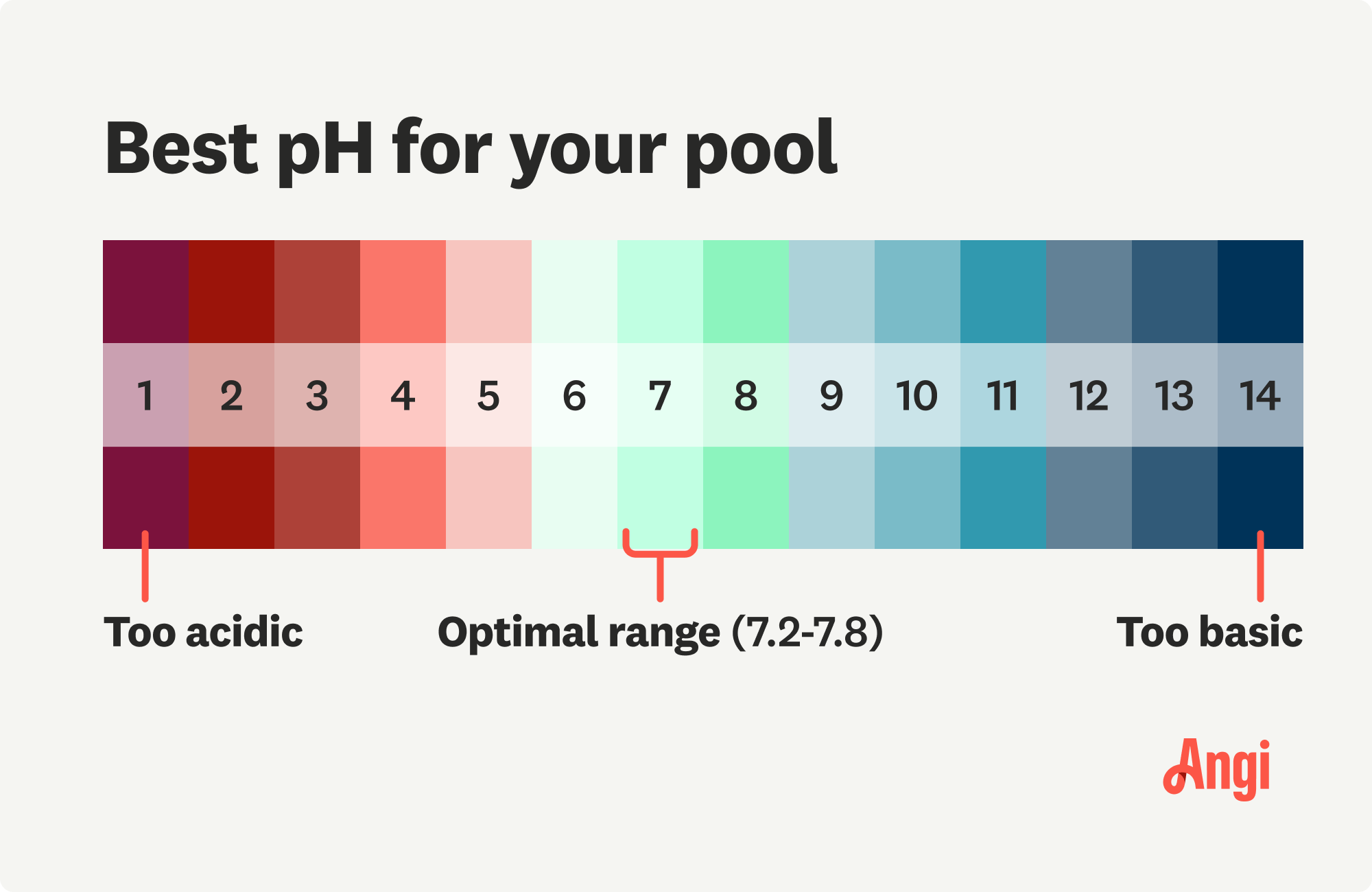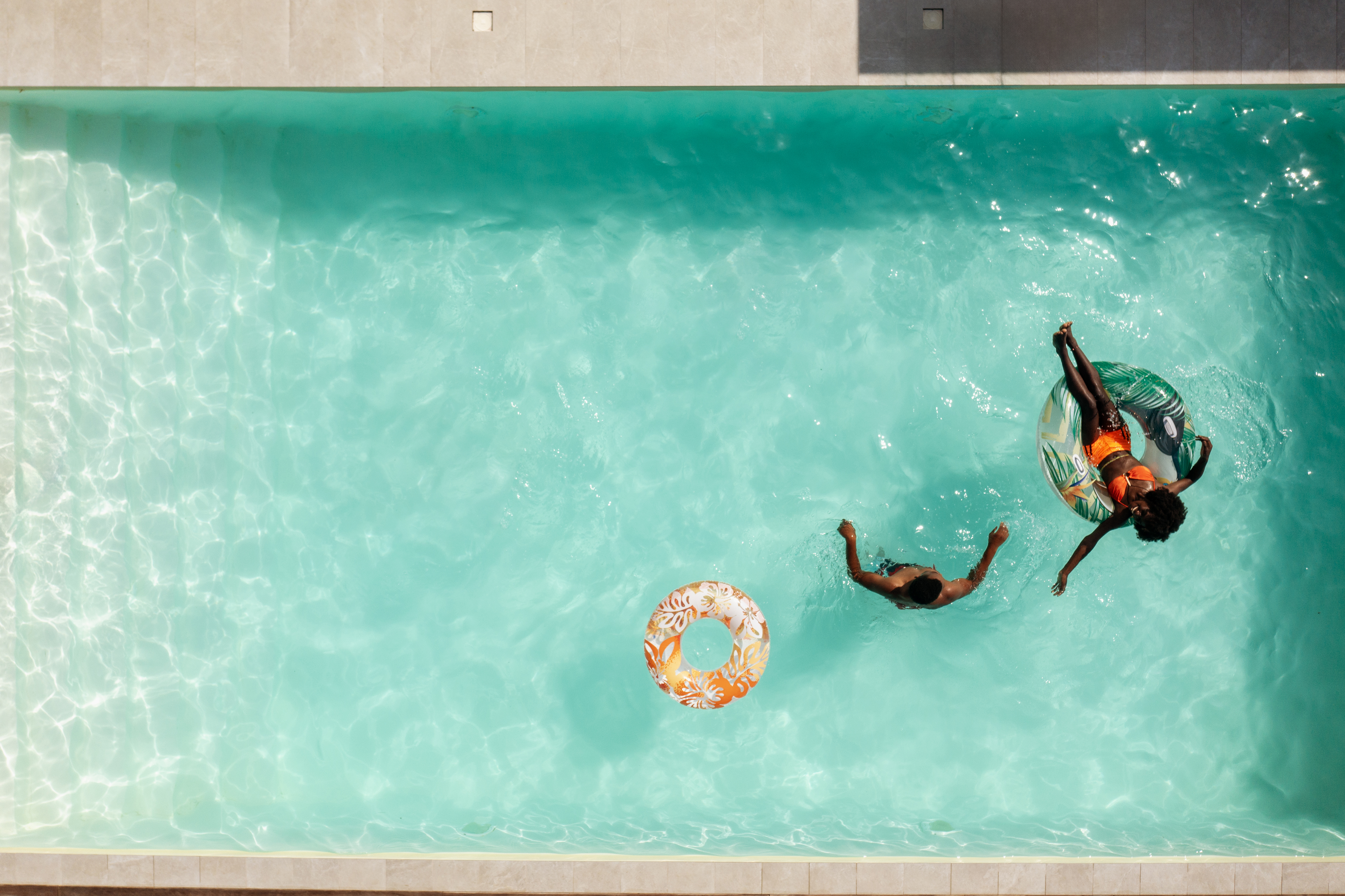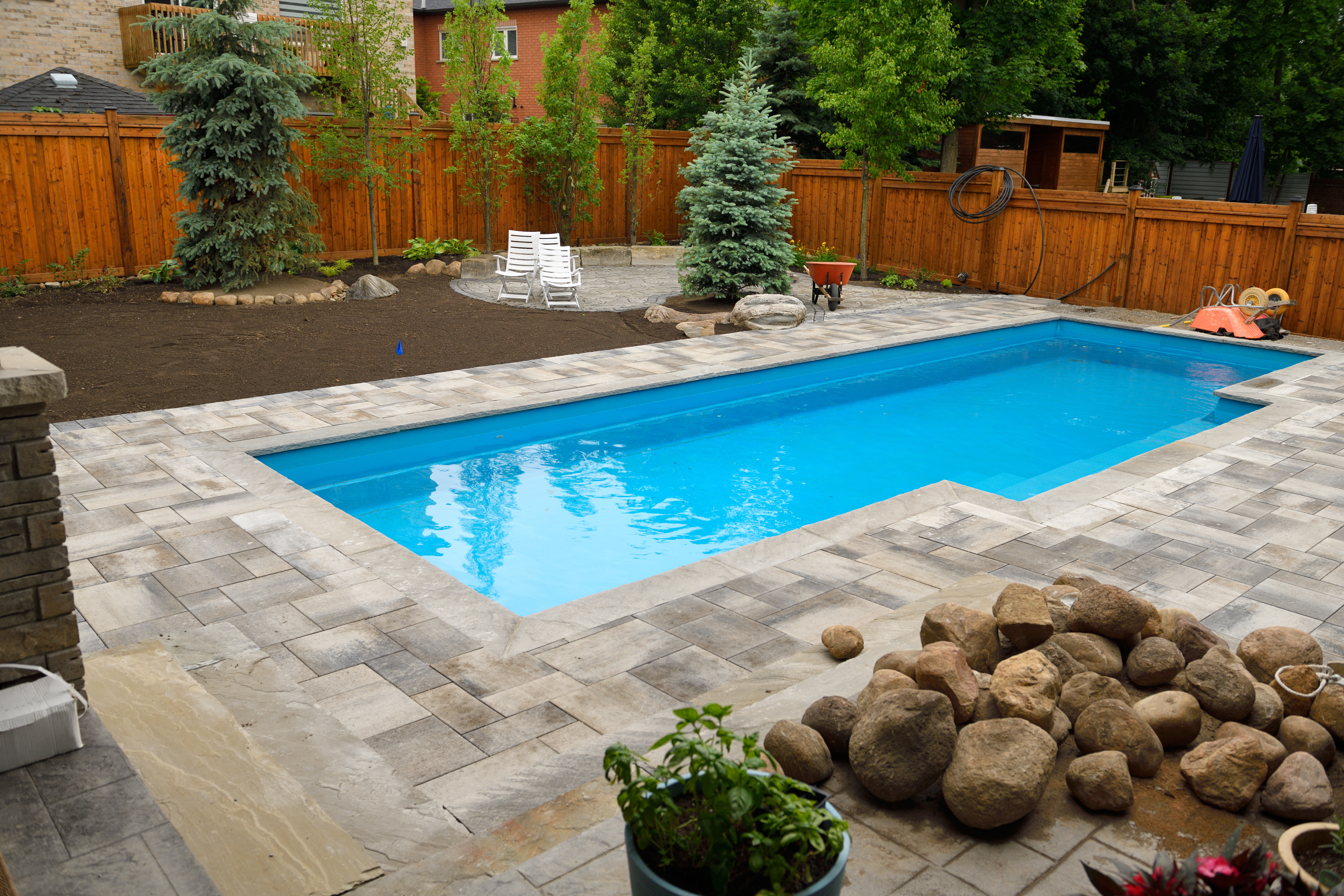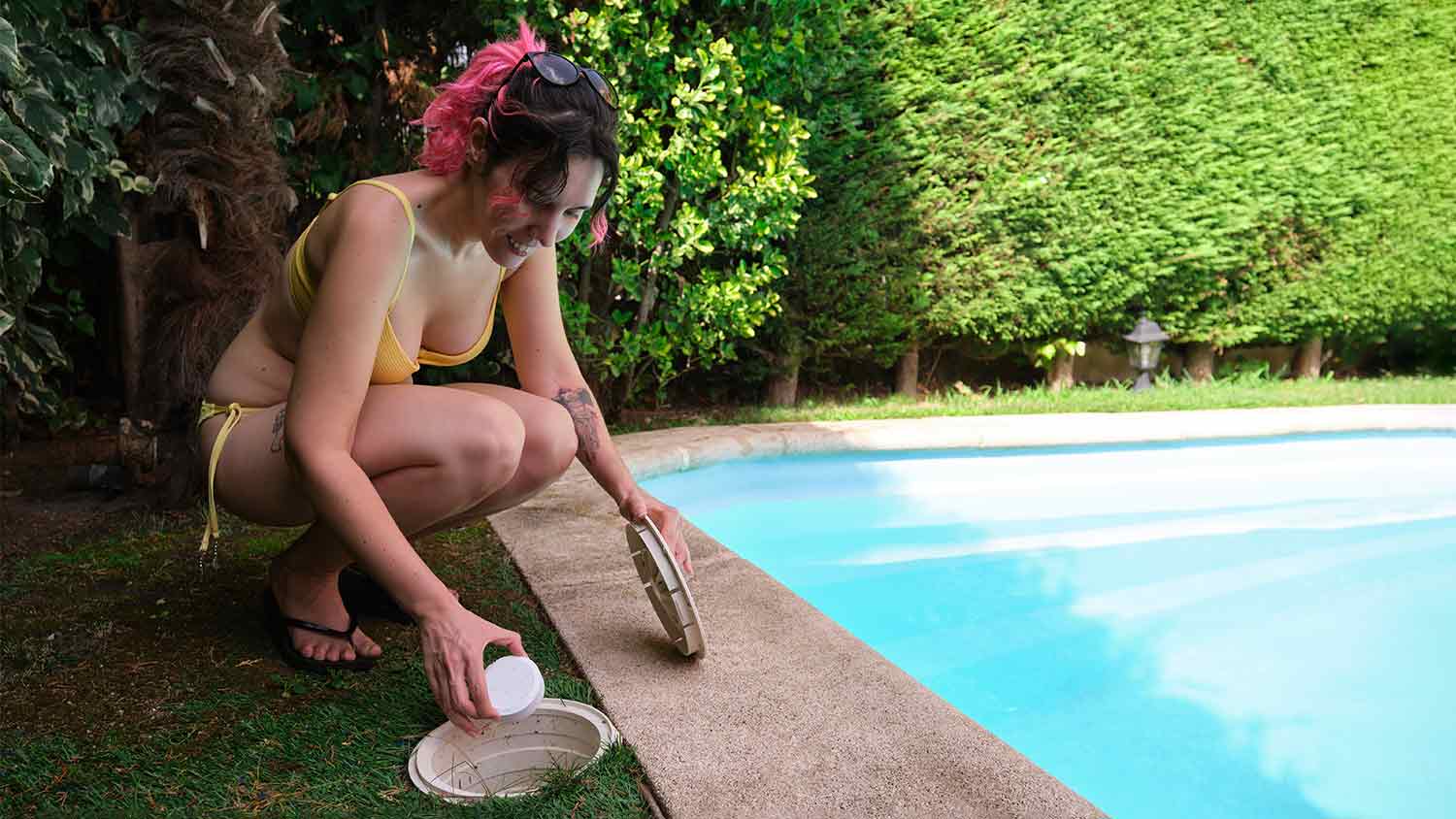
A pool remodel can transform your pool from drab to fab. Find out the average pool remodel costs in Chicago and plan your next project.
Make sure your summer goes swimmingly with an algae-free pool


You were looking forward to a summer full of pool parties—but you noticed some algae growth. Besides being an eyesore, pool algae can put the brakes on any fun you may have planned because it lowers your water quality. Green algae in pools is a common offender, though algae can also be yellow or black. Learn how to get rid of algae in pools so you can get back to lounging on your float and practicing your backstroke.
Algae is a plant without any roots, leaves, or stems. It’s hard to miss algae when it starts growing in your pool because you’ll notice clumps floating in the water or stains on pool surfaces.
When algae grows in your pool, it can cause several problems, such as unbalanced water chemicals, clogged filters, and poor water circulation.
There are many reasons that algae grow in pools, including:
Low or unstable chlorine levels
Low or high pH levels
Contamination from swimsuits or toys from natural waters like oceans, rivers, and lakes
Insufficient pool filtration
Poor water circulation
Extreme weather like heavy rain or high heat
If left to grow unchecked, algae can clog pool filters, make your pool chemicals less effective, and keep your pool filtration system and skimmers from working at their best. Your pool water will struggle to circulate, making your pool dirtier and allowing algae to keep flourishing. This cycle can result in visible algae, discolored water, and the growth of bacteria that can be harmful to swimmers.
Even the smallest amount of algae in a pool can attract algae-eating bacteria, which can irritate pool users. For these reasons, remove algae from your pool right away with the following tips.

There are a few measures you can take to tackle pool algae. Follow these steps to learn how to get rid of algae in your pool and how to clear a green pool. Otherwise, you can call a pool maintenance pro to help you get it done.
Your pool chlorine and filter alone won’t be able to battle the algae. Getting rid of that unsightly algae will take a little work, so roll up your sleeves and recruit some help from around the house if you can.
Note that the process of getting rid of the algae will depend on the type of algae you have. Even if you’re hoping to clear cloudy pool water fast, you’ll need to follow step-by-step directions to get the job done right.
No matter the algae type you’re battling, the first step is doing a manual cleaning.
Begin by scrubbing your pool surfaces, including your floors, walls, and steps. Make sure to get all of the hard-to-reach places like corners and crevices. You should use the pool brush that’s suited for your pool liner type. For vinyl or fiberglass liners, use nylon brushes. If you have a concrete or gunite pool, use stainless steel brushes.
Once you’re done scrubbing, it’s time to do a manual pool vacuuming of all the algae that’s settled on your pool floor. Instead of vacuuming the algae through your filter, it’s best to use a waste line. Keep an eye on your water levels as you vacuum. If it dips 6 inches below the tile, you should pause, refill the pool, and then continue working.
Another part of the manual cleaning is taking care of your bathing suits, toys, and other pool accessories that were exposed to natural bodies of water. Wash all of the bathing suits in your washer using bleach, and wipe down all toys and accessories with a solution of 1 tablespoon of bleach to 1 gallon of water.
The next step is testing and balancing your water levels. Do this by using a pool water test kit and making sure your water falls within recommended levels. Pay special attention to your pH and alkalinity because high pH (anything around 7.8 to 8.2) and alkalinity will hinder pool shock from doing its job. So if needed, learn how to lower pool pH and how to raise pH in pools.
The ideal chemical levels for your pool are:
pH between 7.2 and 7.8
Free chlorine between 1 to 3 parts per million (ppm)
Calcium hardness between 200 and 275

The following steps for removing algae from pools vary according to the type of algae.
If you’re wondering why your pool is green, know that green algae in pools is more common than mustard yellow or black. The green color can range from a teal-green to black-green. This type of algae tends to stick to the pool walls, or you might find clumps of it floating in the water. And while it’s the easiest type of algae to get rid of, it also spreads very fast, so it’s a good idea to tackle the cleaning project sooner rather than later.
Once you’ve completed the steps described above, you need to double-shock your pool with two pounds of shock for every 10,000 gallons of water. This process increases the chlorine levels in your pool and helps to kill the algae. It’s best to shock your pool during the evening or night because the sun burns away unstabilized chlorine. Keep yourself safe during this process by using safety glasses and gloves.
Common signs of chemical issues in pools include cloudy water, algae growth, irritation after swimming, and a strong chlorine odor. If you experience any of these, talk to a pool contractor.
Run your filter and pump until the water clears up, which takes around 24 hours. Once it does, test and balance it again.
Finally, you need to take care of your pool filter. The process varies with the type of pool filter you own. If you want to be absolutely sure you won’t reinfect the pool, you can soak your filter cartridges in diluted muriatic acid or get new ones. If you have a DE filter, do a backwash.
Mustard algae is less common than the green variety and tends to grow only in humid climates in the southern parts of the United States. It can look like pollen or sand and sticks to walls and pool items.
After completing the pool cleaning steps mentioned above, you can get rid of mustard algae by triple-shocking the pool with 3 pounds of shock for every 10,000 gallons of water. Run the pump and filter for 24 hours until the algae is gone, and then test and balance your water.
Clean your filter cartridge or install a brand-new replacement, and your pool should be back to normal.
Black algae is the toughest to get rid of. It’s often found in concrete, plaster, or gunite pools and rarely in fiberglass or vinyl-lined pools.
For black algae, you may need to put in more elbow grease during the first step, which is the manual cleaning. Consider using a putty knife or a pumice stone to scrub off the black algae. And for the most stubborn stains, use a chlorine tablet and scrub it directly onto the surface.
After testing and balancing your water, you need to quadruple-shock the pool. That means using four pounds of shock for every 10,000 gallons of water. Then, run the pump and filter for 24 hours.
You’ll likely need to brush the pool again and then shock it one more time. Once the pool clears up, test and balance the water. In the final step, you need to take care of the pool filter. Clean the cartridge or get a new one.
Treating a saltwater pool for algae requires similar steps. You’ll want to test and balance the water, brush and vacuum the pool, and then shock the water. Run the filter and test the water again. Afterward, clean the filter and replace it if needed.
Note that you can super-chlorinate your saltwater pool using a setting on your chlorinator. This increases the chlorine output from 5 to 7 ppm (up from the usual 1 to 3 ppm) and helps sanitize your pool and prevent algae growth. You can run this setting weekly, as well as after heavy use or heavy rains. You might also include a chemical pool shock treatment once to twice a month if you’re noticing cloudy water or the beginning of algae growth.

Considering how time-consuming algae removal can be, you’re probably eager to keep your pool algae-free. Here are the most important pool maintenance tips to help keep the algae from returning:
Maintain a regular pool cleaning routine, including brushing and vacuuming.
Test and balance your water levels weekly.
Shock your pool weekly.
Use algaecide preventatively (wait until chlorine is less than 5 ppm).
Ensure your filtration system is running smoothly all season long.
Always clean toys and swimwear after swimming in natural bodies of water.
Run your pump and filter eight to 12 hours a day all season long.
Rinse off before jumping in the pool.
Hire a local pool services company to perform regular maintenance and repairs.

You can DIY algae treatment for the cost of pool shock, which is $10 to $30 depending on how much you need. This is assuming that you have all of the other pool cleaning chemicals and tools you need on hand.
While it's a money-saver to do the job yourself, the process requires a lot of manual labor with all the scrubbing and vacuuming. Moreover, you have to deal with all the water testing and balancing, which can be a big job. And when you factor in all the time you need to do the pool shock and filter cleaning, you'll see that the process requires a significant time investment.
When you hire a pool services company, they’ll handle everything from start to end. It’s likely that the company will come to your house several times to do the chemical treatments, disassemble and clean your filters, and apply algaecide. You can expect this service to range between $250 to $500 or more.
Some companies will drain, power wash, and sanitize your pool to prevent algae from coming back. This service starts at $300. If you have leftover stains after the drain and clean, you may need an acid wash, which starts at $600.
From average costs to expert advice, get all the answers you need to get your job done.

A pool remodel can transform your pool from drab to fab. Find out the average pool remodel costs in Chicago and plan your next project.

Harsh winters can wear down your pool liner. If you need to swap it out for swim season, this guide outlines pool liner replacement costs in Chicago.

A pool can increase your happiness at home and raise home value. Here’s what it takes to cover in-ground pool costs in Chicago.

A pool liner can protect your pool from leaks and improve its appearance. Learn more about the different types of pool liners and which is right for your pool.

Our chlorine calculator helps you determine the exact amount of chlorine to add to your pool, based on its volume and your desired parts per million (ppm) level.

If you own a pool, you may wonder: how many gallons in my pool? Read on for our pool volume calculator to learn how much water is in your swimming pool.